7 Best Fluffy Chickens for Your Flock
One thing that never fails to amaze me is the sheer diversity and charm of fluffy chickens. These adorable birds are not just appealing to the eye but also bring joy and comfort to many chicken keepers around the world. In this article, we’ll explore the fascinating world of fluffy chickens, their types, and why you might want to consider raising them.
Why Fluffy Chickens?
When it comes to choosing the right chicken breed for your backyard coop or farm, fluffy chickens stand out for a number of reasons. From their distinctive appearance to their sweet disposition, they are truly something special. Let’s explore these aspects in more detail.
Appealing Appearance
One of the top reasons people are drawn to fluffy chickens is their extraordinary appearance. Unlike other chicken breeds, these birds are enveloped in a layer of dense, soft, fluffy feathers that are reminiscent of a cloud or a plush toy. This unique plumage gives them a delightful, cuddly look that is simply irresistible. Their feathers can come in a variety of colors and patterns, adding to their appeal. They’re sure to grab anyone’s attention and have them cooing over their cute, fluffy exterior.
Temperament
Fluffy chickens are not just about looks; their personalities are equally charming. Many breeds known for their fluffiness, such as Silkies and Cochins, are renowned for their friendly and gentle nature. They’re usually calm and docile, which makes them excellent pets, even for families with children. Many keepers also note that these breeds are less skittish than others, often enjoying the company of their human caretakers. Imagine a peaceful afternoon in your yard, with your fluffy chickens happily clucking around you – it’s a picture of tranquility.
Specialty Breeds
Fluffy chickens often belong to specialty or heritage breeds that have unique characteristics and a rich history. Breeds like the Frizzle with its curled feathers or the Silkie with its soft, silk-like plumage are not only visually striking but also conversation starters. They often come with intriguing stories of their origins and unique traits. Owning these birds gives you not only an adorable feathered friend but also a piece of living history and a talking point with fellow chicken enthusiasts. In addition, raising these specialty breeds can contribute to the preservation of these unique lines, adding an element of conservation to your chicken-keeping endeavors.
Types of Fluffy Chickens
Silkie Chickens
Silkie Chickens, known for their silk-like feathers and friendly disposition, are often considered the “teddy bears” of the chicken world. They come in various colors, and their calm nature makes them great pets. Need a cuddle buddy? A Silkie Chicken might be your perfect match!
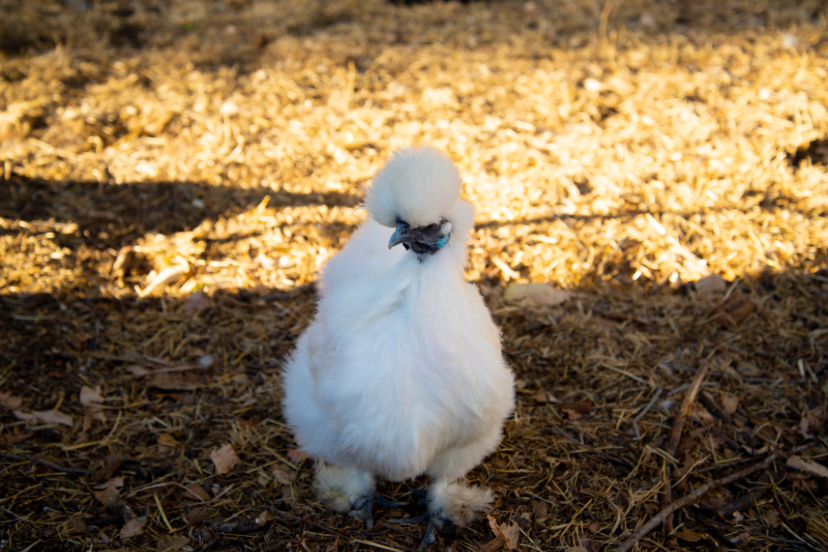
Silkie chickens, loved for their fluffy plumage, have black skin, bones, and flesh due to a genetic condition called fibromelanosis.
Read our article Silkie Rooster vs Hen: Deciphering The Differences for more information.
Cochin Chickens
Cochin Chickens, native to the coastal city of Cochin in China, are renowned for their impressive size and dense, cloud-like plumage. These poultry giants can weigh up to 11 pounds for males and around 8.5 pounds for females, making them a standout in any flock. Their expansive feathers even extend down to their legs, giving them the appearance of wearing feathery trousers.
Despite their grandeur, Cochins possess a gentle and docile temperament, often forming a sharp contrast to their imposing stature. Their calm and affectionate nature, combined with their unique feathered legs and voluminous body, makes them a favorite among poultry enthusiasts and families alike.
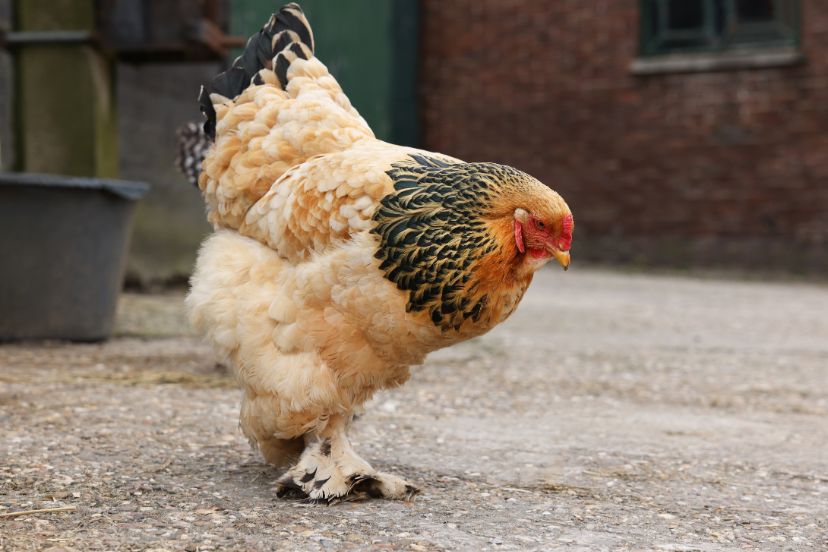
Cochins are not just birds; they are a delightful mix of majesty and heart, offering both spectacle and companionship to their keepers.
Frizzle Chickens
Frizzle Chickens are a sight to behold in the world of poultry, boasting a distinctive appearance characterized by their curly, frizzled feathers. This unique plumage seems to defy the usual sleekness associated with birds, giving them an appearance reminiscent of a feather duster or a stylish perm. The feathers curl outwards, rather than laying flat against their body, resulting in a whimsical, almost artistic silhouette that makes them stand out.
Beneath those curled feathers lies a vivacious and intelligent creature. These birds are known for their lively, inquisitive nature and often exhibit a keen interest in their surroundings. Their alertness and sociability make them ideal companions for poultry enthusiasts looking for interactive and engaging pets.
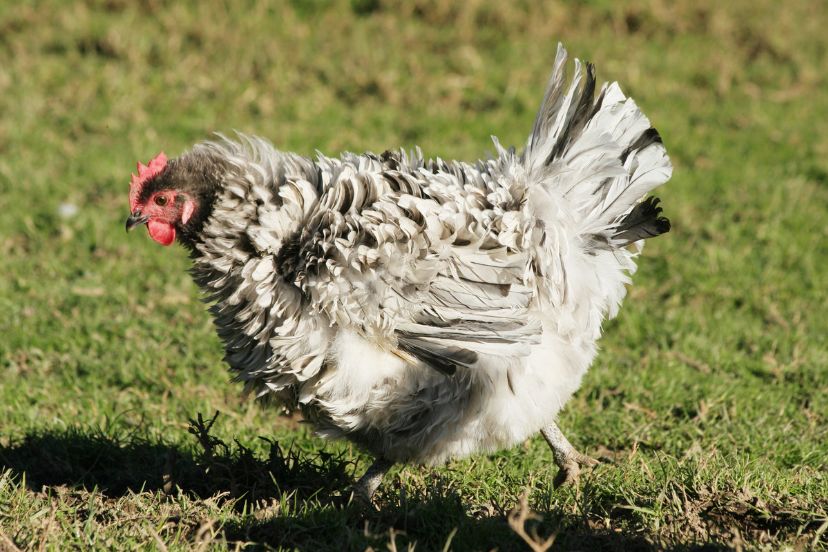
Frizzle Chickens are a blend of beauty and brains, ensuring endless entertainment and connection for their keepers.
Polish Chickens
Polish chickens, with their origins, traced back to Europe, have the most dramatic crest of feathers that sprouts from the top of their heads, creating a regal or sometimes punk-rock appearance. This lush crown, which can be likened to a flamboyant hat or a fancy headdress, sets them apart from other breeds. Complementing this is their soft, fluffy plumage that adds to their charm, making them look as if they’ve just stepped out of a fairytale.
They’re typically gentle, calm, and have a curious disposition. Their manageable size and docility make them particularly suitable for families and individuals looking for a low-maintenance yet distinctive pet.
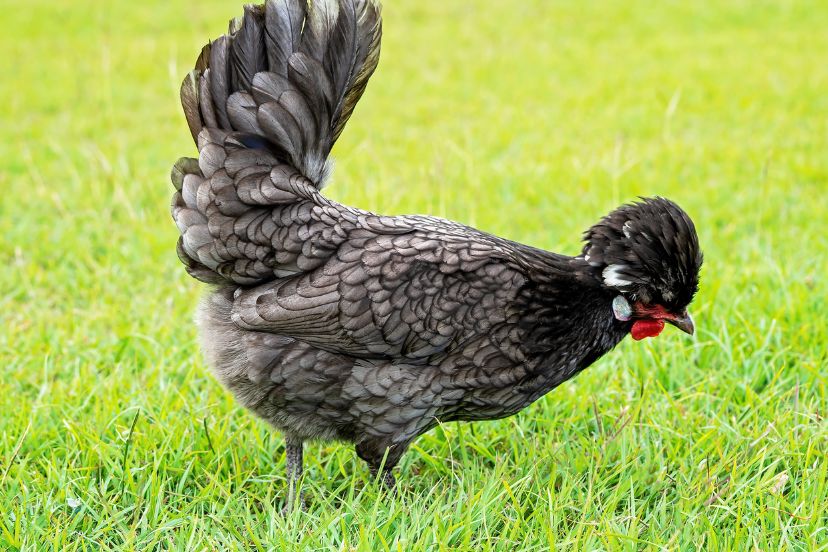
Polish chickens’ gentle nature often allows them to get along well with other breeds, making them a harmonious addition to diverse flocks.
Faverolles Chickens
Faverolles have a rich history, originating from the village of Faverolles in France, which influenced their name. Their distinct vocalizations and hearty nature make them adaptable to various climates, ensuring they thrive in colder and temperate conditions. These birds are beautiful and known for their consistent egg-laying capabilities, adding a functional advantage to their already endearing characteristics. With a harmonious blend of aesthetics and utility, Faverolles chickens easily find their place in the hearts of poultry enthusiasts worldwide.
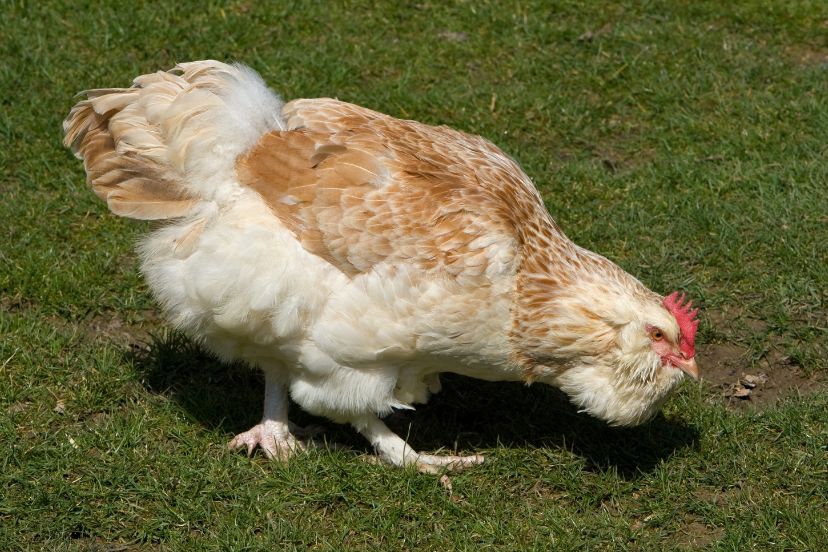
Brahma Chickens
Brahma Chickens, often called the ‘King of Poultry’, are renowned for their large size and abundant fluffy plumage. This breed is not just impressive in size but also has an incredibly gentle nature, despite their imposing stature. They come in several color variations, including light, dark, and buff. With their feathered feet and calm demeanor, Brahmas are an excellent choice for those looking for a fluffy chicken with a big personality.
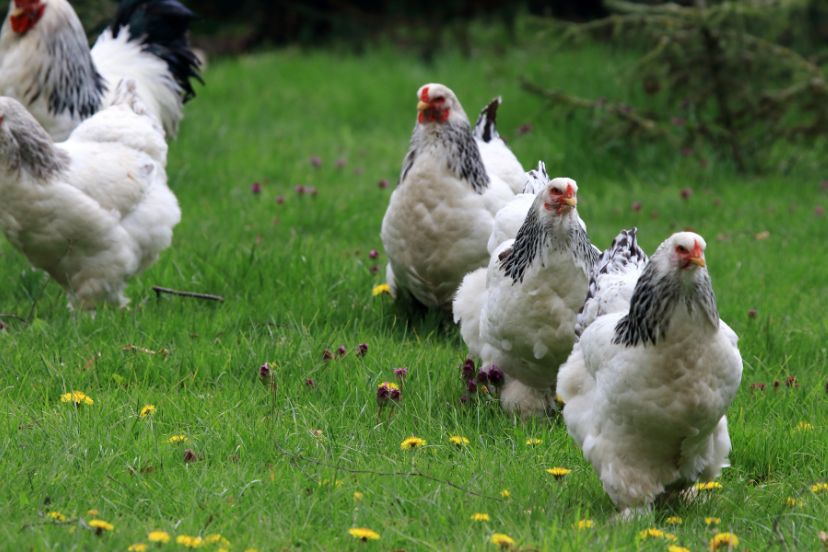
Sultan Chickens
Originating from Turkey, Sultan Chickens are a treat for the eyes with their unique features. They have a crest of fluffy feathers on their heads, feathered feet, and a distinctive muff and beard. Their white plumage is pure and fluffy, and they’re generally smaller than many other breeds. Sultans are known for their friendly nature and are often kept as ornamental birds due to their striking appearance.
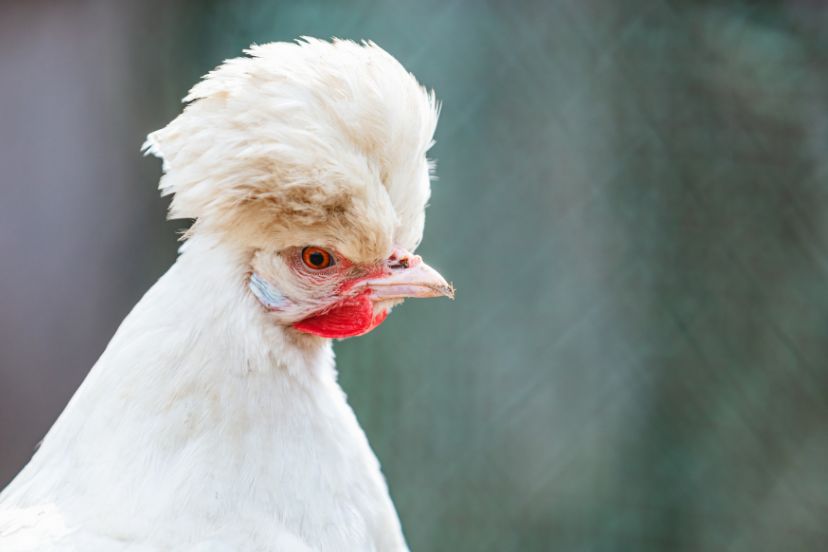
FAQs
What are the best fluffy chicken breeds for beginners? Due to their gentle nature, silkie and Cochin Chickens are often recommended for beginners.
Do fluffy chickens require special care? Yes, special grooming and care might be needed, especially in maintaining their unique feathers.
Can I breed different types of fluffy chickens together? While possible, it’s essential to understand the genetics and characteristics of the breeds you are mixing.
Are fluffy chickens good layers? Some breeds are good layers, while others may not be as prolific. It depends on the specific breed.
Where can I buy fluffy chickens? Many reputable breeders specialize in fluffy chickens, and local poultry shows are a great place to find them.




